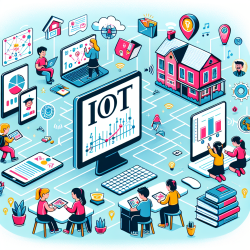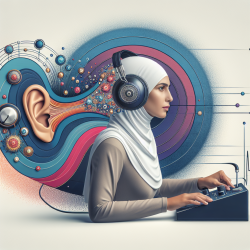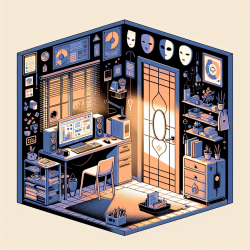Introduction
The COVID-19 pandemic has accelerated the adoption of technology in various sectors, including healthcare and education. The Internet of Things (IoT) has emerged as a pivotal technology in managing healthcare challenges during pandemics. This blog explores how IoT can be integrated into online therapy services for schools, particularly in speech-language pathology, to improve outcomes for children.
The Role of IoT in Healthcare During COVID-19
The research article "Internet of Things for Current COVID-19 and Future Pandemics: an Exploratory Study" highlights the transformative role of IoT in healthcare. IoT devices have been instrumental in early diagnosis, monitoring during quarantine, and post-recovery tracking of COVID-19 patients. These devices include wearables, drones, and smart applications that provide real-time data and remote monitoring capabilities.
Applying IoT in Online Therapy for Schools
As schools transition to online learning environments, integrating IoT can enhance the delivery of therapy services. Here are some ways IoT can be leveraged in school therapy:
- Remote Monitoring: IoT devices can track students' engagement and progress in real-time, providing therapists with valuable data to tailor interventions.
- Wearable Technology: Devices such as smart bands can monitor physiological responses during therapy sessions, offering insights into students' stress levels and engagement.
- Smart Applications: Apps integrated with IoT can facilitate interactive therapy sessions, enabling therapists to assess and adjust strategies based on real-time feedback.
Data-Driven Decisions in Speech-Language Pathology
Incorporating IoT in therapy services allows for data-driven decision-making, which is crucial for effective speech-language pathology. By analyzing data collected from IoT devices, therapists can identify patterns and make informed decisions to enhance therapy outcomes. This approach ensures personalized and adaptive interventions that cater to the unique needs of each child.
Encouraging Further Research
The potential of IoT in transforming online therapy services is vast, yet underexplored. Practitioners are encouraged to delve deeper into research on IoT applications in education and therapy. Understanding the nuances of IoT technology and its implications can lead to innovative solutions that address the challenges posed by remote learning environments.
Conclusion
The integration of IoT in online therapy services for schools represents a significant advancement in the field of speech-language pathology. By leveraging IoT technology, therapists can enhance the quality of care and improve outcomes for children. As we navigate the complexities of remote learning, embracing data-driven approaches will be key to delivering effective therapy services.
To read the original research paper, please follow this link: Internet of Things for Current COVID-19 and Future Pandemics: an Exploratory Study.










